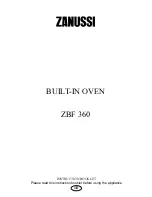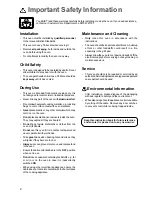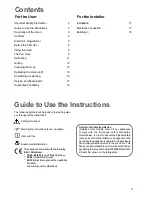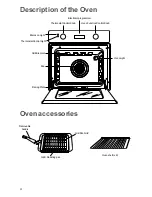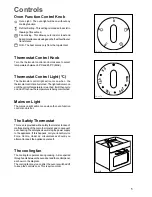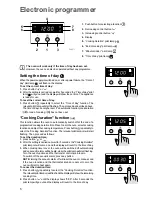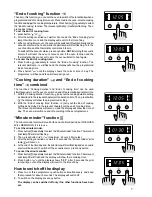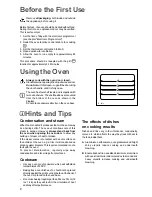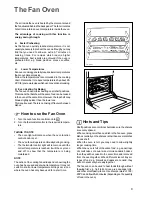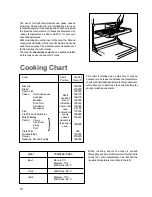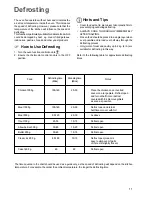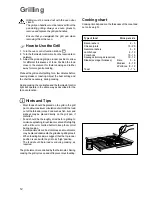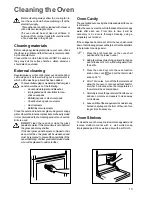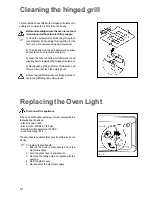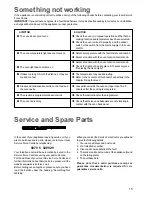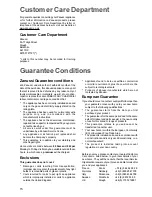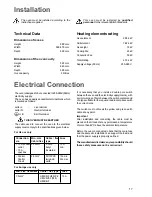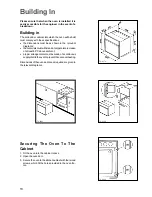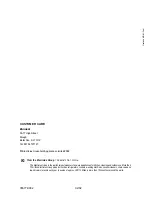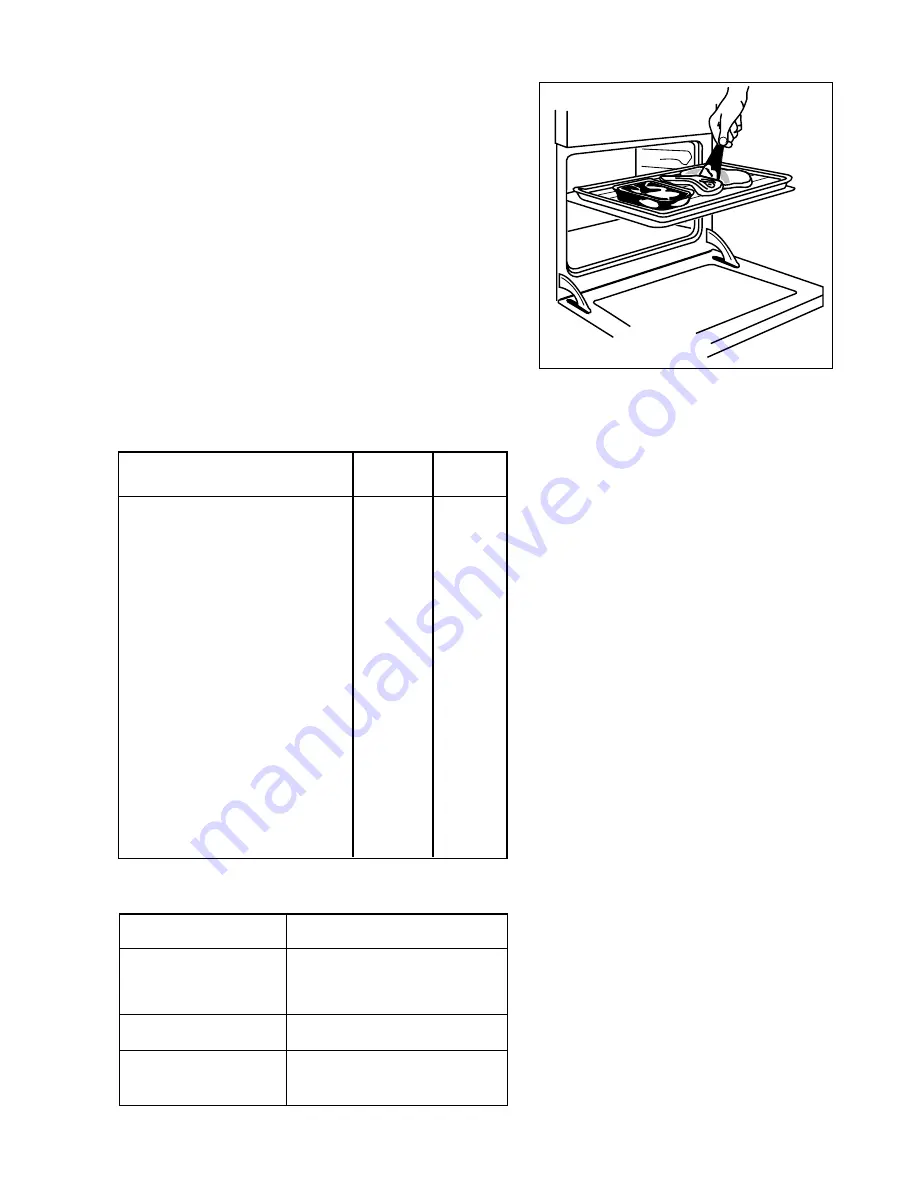
10
Food
Shelf
Cooking
Position
Temp (°C)
Biscuits
180-190
Bread
210-220
Casseroles
130-140
Cakes:
Small and queen
160-170
Sponges
160-170
Madeira
140-150
Rich Fruit
130-140
Christmas
130-140
Meringues
90-100
Fish
170-190
Fruit Pies and Crumbles
190-200
Milk Puddings
130-140
Pastry:
Choux
Shortcrust
Flaky
190-200
Puff
Plate Tarts
180
Quiches/Flans
170-180
Scones
210-220
Roasting: Meat & Poultry
160-180
Cooking Chart
This chart is intended as a guide only. It may be
necessary to increase or decrease the temperature
to suit your individual requirements. Only experience
will enable you to determine the correct setting for
your personal requirements.
When roasting, ensure the meat is cooked
thoroughly, use a meat thermometer if preferred to
check the centre temperature has reached the
required temperature (see table to the left).
MEAT
TEMPERATURES
Beef
Rare - 60°C
Medium - 70°C
Well Done - 80°C
Pork
Well Done - 80°C
Lamb
Medium - 70°C
Well Done - 80°C
}
Shelf
positions
are not
critical but
ensure that
oven
shelves are
evenly
spaced
when more
than one is
used.
The use of too high temperatures can cause uneven
browning. Check with the recommendations for oven
temperatures given in the cooking charts, but be prepared
to adjust the temperature, if necessary. Remember to
reduce temperatures by about 20-25°C for your own
conventional recipes.
When roasting do use the trivet in the meat tin. Fat and
meat juices will drain into the meat tin below and can be
used to make gravy. The trivet also prevents splashes of
fat from soiling the oven interior.
The meat tin
should not
be placed on a heated hotplate
as this may cause the enamel to crack.
Summary of Contents for BUILT IN OVEN ZBF 360
Page 19: ......

